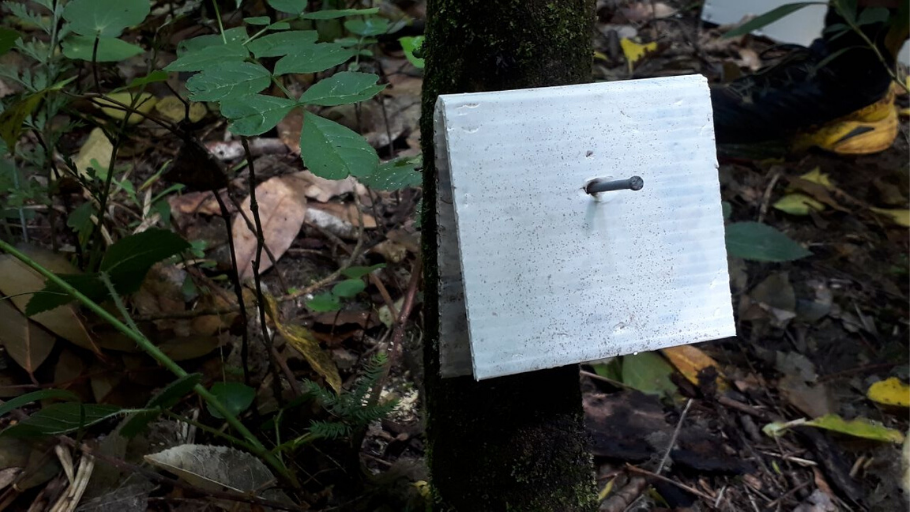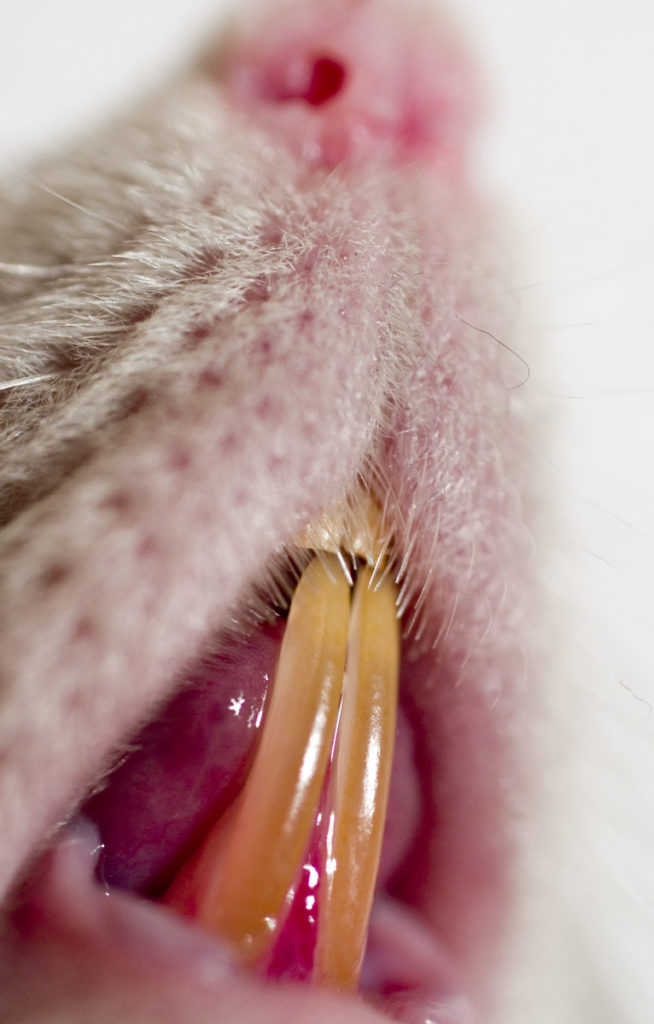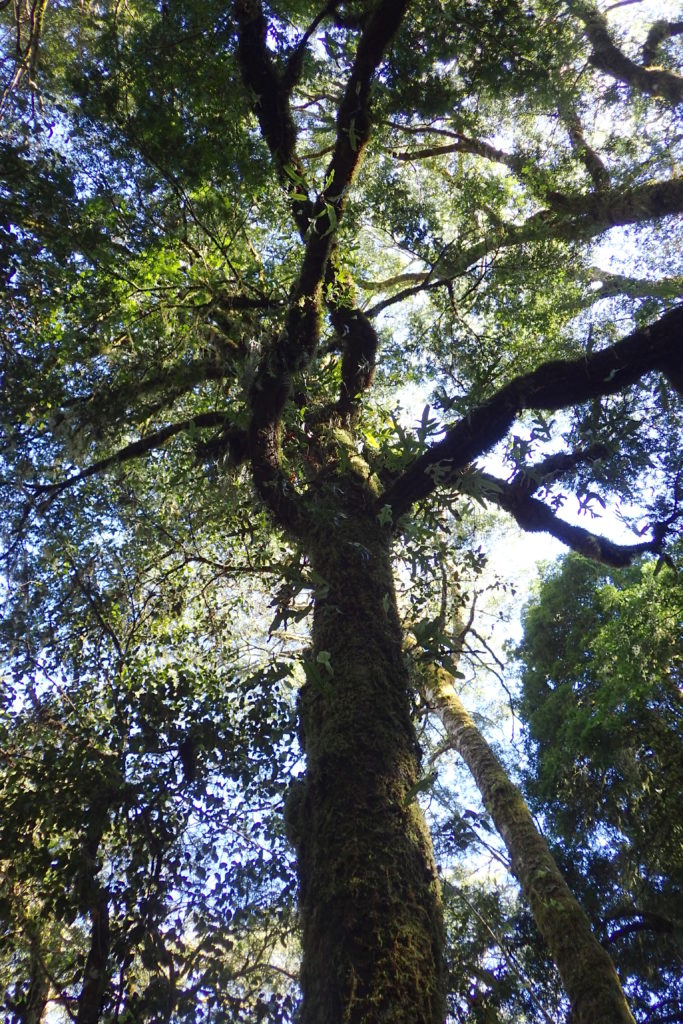How do you detect the presence of rats and mice if they’re surrounded by a glut of natural food? If it’s a mast year and there’s a carpet of seeds on the forest floor, they just may not be interested in your peanut butter-flavoured chew cards. If there are only a few remaining rats or mice in a plentiful habitat, are they really going to be interested in your detection apparatus?
The key, say researchers, is to use a toolbox of detection methods, as individual rodents may vary in their susceptibility to detection devices.
Several methods have been developed for monitoring rodents, although the majority have been optimised for indexing species’ relative abundance rather than detecting species’ presence. Most of these techniques rely on deploying monitoring devices over a few days with lures to attract rodents (e.g. wax tags, chew cards, tracking tunnels, camera traps, hair tubes, kill traps), although not all techniques rely on attraction.

In an article just published in the New Zealand Journal of Ecology, researchers Janet Wilmshurst and Joanna Carpenter report on their testing of one more detection tool to add to that toolbox.

“Invasive rodents pose one of the biggest threats to island ecosystems globally. In addition, subsets of rodent-free islands in larger archipelagos often act as refugia for threatened species and are used as safe ‘arks’ for translocated species, making ongoing monitoring of rodents essential to prevent re-establishment and protect native fauna and flora. But many detection devices fail to attract rodents when natural resources are abundant.”
So the researchers investigated whether some of those abundant natural resources could be used as a reliable indicator of rodent presence. Methods for determining rodent presence needed to be accurate and reliable – whether for initial surveys, to verify the pest-free status of an island, or for routine monitoring to detect a rodent incursion.
“Rodents are well-established seed predators, and the distinct gnaw marks they create and leave on woody seedcases potentially add another method to the rat detection toolbox on islands where seeds are sufficiently large to preserve teeth marks. While rodents usually consume small seeds whole or destroy them entirely, large seeds that are protected by woody endocarps (seedcases) require a different feeding technique, with rodents using their sharp incisors to nibble a hole in the endocarp to access the fleshy seed inside. This feeding technique leaves a distinct and longlived signature of bite marks behind on the seedcase.”
The researchers tested the reliability of rodent-gnawed miro seeds as an indicator of rodent presence on fifteen islands and one mainland site in southern New Zealand.
“Miro seeds are a preferred food for rats, with piles of rat-gnawed seeds beneath parent trees a common sight on the New Zealand mainland (North, South, and Stewart Islands) as well as in prehistoric deposits. We also tested whether differences in the size of incisor marks on the seeds could be used to differentiate between rat or mice presence.”
The research was carried out in coastal Fiordland.
“Coastal Fiordland, in the south west of southern New Zealand, is highly indented and contains hundreds of islands, ranging from rock stacks to 208 km2 Resolution Island. Miro trees are widespread throughout the area and are found on most islands large enough to support forest. Ship rats, Norway rats, and house mice occur throughout the area.”
The survey technique involved visiting each island looking for miro trees with seeds under their canopy.
“Once a tree with fallen seeds was found on each island (or site), then 10 minutes was spent under the canopy of that tree collecting as many miro seeds as possible in any condition (i.e. whole, gnawed, broken or cracked). If rat-gnawed seeds were observed in the collection, then no further search for trees was undertaken, as presence was confirmed. If no gnawed seeds were found, other trees and rat-gnawed seeds were searched for. In all cases, gnawed seeds were found beneath the first tree found, if they were found at all on an island. In cases where no gnawed seeds were found in the first tree, they were never found in subsequent searches under other trees.”
The seeds collected from beneath one miro canopy at each site were examined for characteristic gnaw marks. A total of 3332 seeds were collected, of which 391 (11.7%) were rodent-gnawed. An average of 185 miro seeds were collected from each site.
“The collected seeds were taken to the Long Term Ecology laboratory at Landcare Research, Lincoln, where they were cleaned and examined under low magnification (× 10), counted and separated into one of five categories: intact, parrot-cracked, rodent-gnawed, broken or insect damaged. This assessment requires little time or skill, and although is easier to do using a stereomicroscope, it could also be undertaken in the field using a × 10 hand lens to examine the teeth marks.”
“During seed predation, rats bite a well-defined hole in the top or on the side of miro seedcases, large enough that they can scrape out the fleshy seed from inside using their incisors. The holes left by rodents are unique and edged with a series of distinctive sharp grooves made by the incisors which look like chisel marks. These can be reliably separated from those predation marks left by native seed predators such as endemic parrots (kākā), and unknown insects.”

Presence or absence of gnaw marks was compared with records of rodent presence obtained using traditional methods including tracking tunnels, kill traps, and/or rodent detection dogs. The researchers also found that they could determine whether rats or mice had been feeding on the seeds.
“Measurements of bite marks on seeds suggested that mice create smaller bite marks on seeds than rats, allowing discrimination between the taxa. Gnawed seeds had a slightly lower probability of detecting rats than traditional methods (rats detected at 5/6 sites where they had been previously recorded using other methods), and a higher probability of detecting mice where they existed (mice detected at 7/8 islands where they existed, vs 5 for other methods).”
“Our randomisation tests indicated that between 2 and 56 seeds should be collected from each island to be 95% confident of detecting a rodent. We suggest a minimum sample size of 56 seeds from each island in our study region but note that our total collection of 865 seeds from Resolution Island (over two sites) was still not sufficient to detect mice. As the density of rodents on the surveyed islands was unknown, we cannot comment on how sensitive gnawed seeds are to very low rodent densities.”
Overall, the results of the study suggest that gnawed seeds can complement other rodent detection devices to increase the probability of detection.
“As miro trees were easy to find at all the sites, seed assessment required less time and infrastructure than many other rodent detection methods.”
The longevity of the evidence is another advantage of seed analysis.
“As woody endocarp seeds typically persist on the ground for at least a year, this method offers a significant advantage over many other rodent detection methods in that the seeds accumulate and retain evidence of rodent presence for far longer time frames than other monitoring methods thus raising the chances of detection. Chew cards, tracking tunnels, and camera traps can only detect rodents during the window of their deployment (which is often only for a few days). This window of detection can then be affected by suboptimal monitoring conditions, making detection even less likely.”
“The method could be used to detect rodent presence on other island groups globally, e.g. using opened coconuts in the field as a kind of natural waxtag or ‘cocotag’,” the researchers conclude.
The full research report is published in the New Zealand Journal of Ecology and is freely available online.

